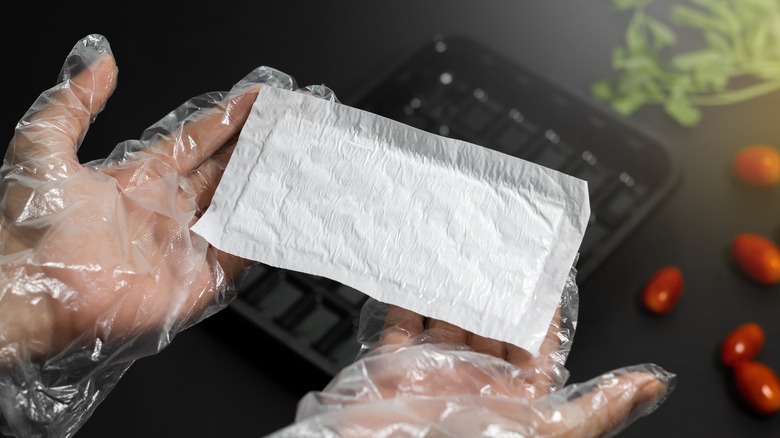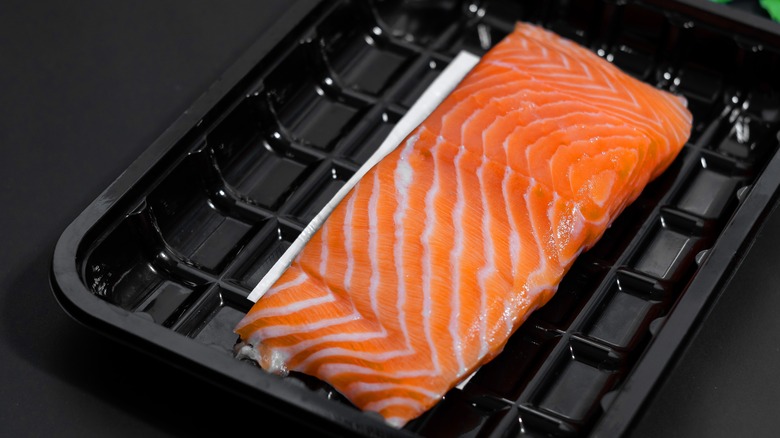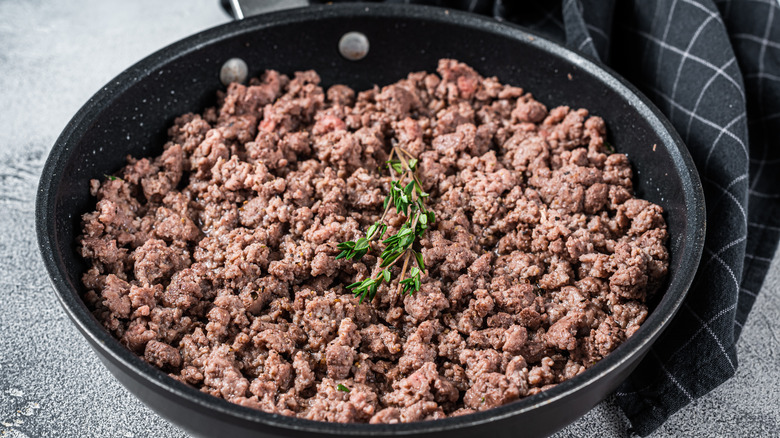The Actual Purpose Of The Absorbent Pads In Ground Meat Packaging
When removing ground meat from its packaging, you might have noticed the absorbent pad placed at the bottom of the tray. At first glance, these pads may seem like just another piece of packaging — about on par with reusable straws packaged in plastic — but they actually serve a very important purpose.
Most obviously, the pads under ground meat soak up excess liquids. This makes the meat less likely to drip everywhere as you move it from its packaging to a pan, preventing cross-contamination by dangerous bacteria. Of course, you should still act with caution and clean all work surfaces, as, according to the New York State Department of Health, even a single drop of juice from raw meat can have enough bacteria in it to lead to food poisoning.
Another interesting feature of these pads is that they effectively extend the shelf life of meat. Because the meat is not sitting in a bacteria-filled puddle of its own juices, bacterial growth is largely contained within the absorbent pad. Not so pointless after all, right?
How do absorbent pads in meat packaging work?
As you can imagine, a lot more goes into these absorbent pads than meets the eye. First off, they come with one of two different fillers. The first is the same silica gel you might find in little "do not eat" packets in your new shoes, included to absorb extra moisture that might otherwise damage the shoes. The second type of filler is cellulose, or plant fibers, which again acts as a sponge.
The absorbent filler is contained within a non-stick, porous poly film that is easily peeled away from the meat. The film's pores allow moisture to effortlessly enter, while limiting any leakage back out of the pad. Of course, a pad's capacity varies from one company and filler to the next, with some handling as little as seven grams of liquid and others up to 75 grams. That's some pretty impressive absorbency for a thin piece of unassuming packaging.
What happens if you accidentally cook an absorbent pad with your meat?
Although the absorbent pads beneath meat are designed to be non-stick surfaces, sometimes sticking occurs and goes unnoticed. The next thing you know, you're plating your home-cooked meal, only to realize the pad has been cooked alongside your meat. Now what?
Neither the silica gel nor the cellulose fillings are digestible, meaning they'll pass right through your digestive tract should you accidentally consume pieces. What's more, the USDA requires all packaging materials to be free of potentially harmful substances that could leach into your food over time.
That being said, if the absorbent pad appears damaged (melted, torn, peeling, etc.), the USDA strongly recommends not consuming the meat that has been in contact with it during cooking. After all, exposure to high temperatures is an entirely different story when it comes to chemicals present in materials like plastic, and that's not something you want to mess with. As always, a good rule of thumb is to throw the meat out if you have any doubts.



